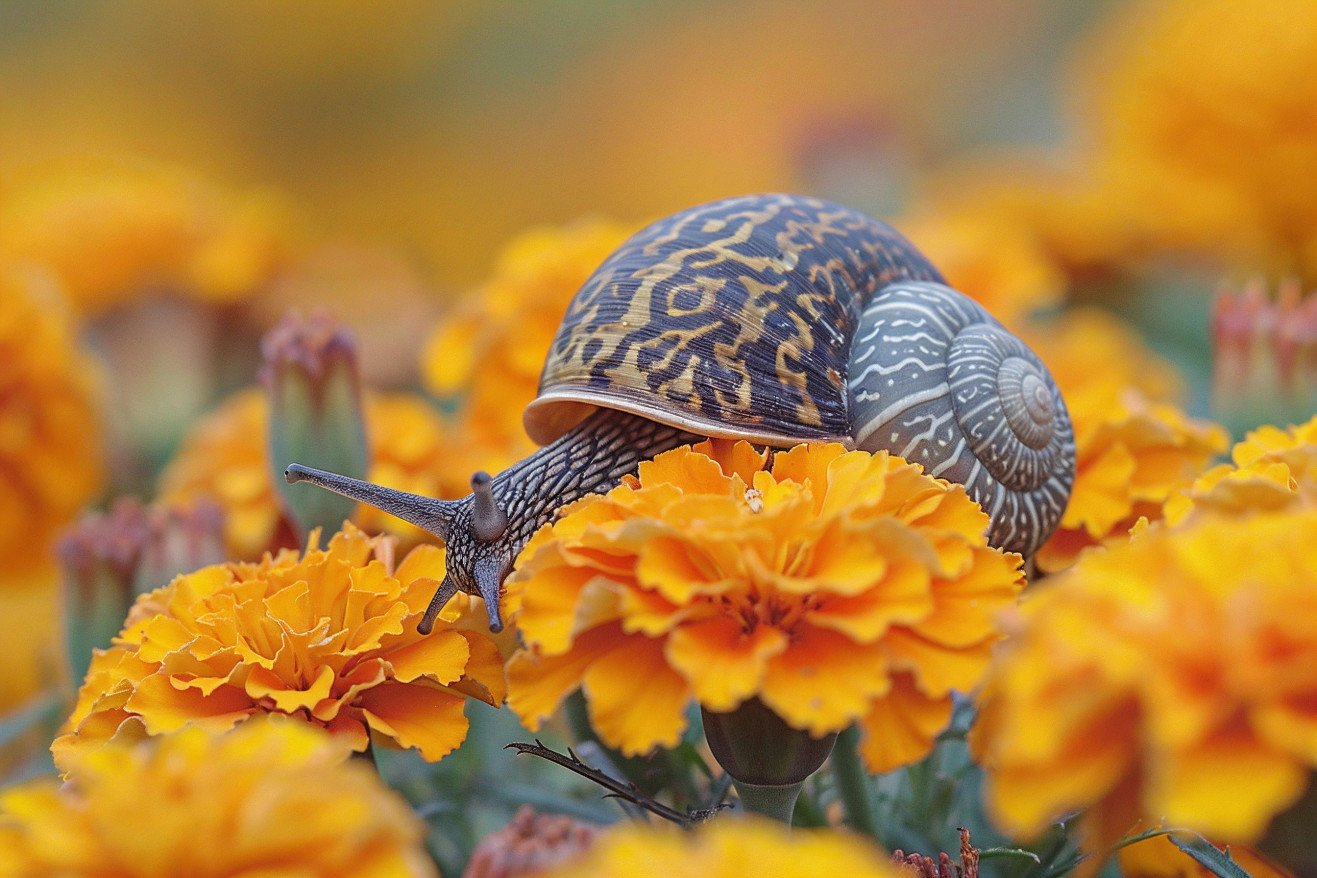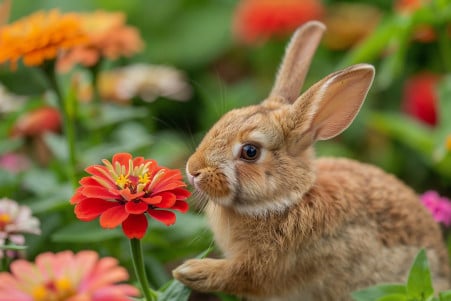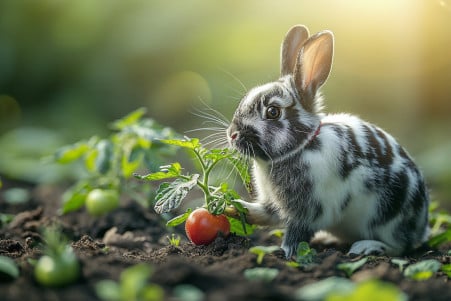Marigold Munchers: What Eats Marigolds and How to Stop Them
14 May 2024 • Updated 13 May 2024

Marigolds are a popular garden flower, but they can also be a target for a variety of critters and pests. While marigolds are not the first choice for most animals, there are a number of insects, mammals, and other animals that will eat them if other food is scarce. Marigold predators include rabbits, deer, groundhogs, snails, slugs, and several species of caterpillars and beetles.
To help you better understand the many animals that eat marigolds and learn how to protect your plants, we'll look at what researchers, horticulturists, entomologists, and wildlife experts have to say on the topic. By learning about the eating habits and lifestyles of these marigold predators, you can make sure you're using the most effective deterrents and preventative measures to keep your garden a healthy, pest-free place.
What eats marigolds?
Marigolds for Pest Control
Marigolds have long been used as a natural pest control in gardens. This is because the roots of marigold plants produce chemicals such as alpha-terthienyl that can kill parasitic nematodes that attack the roots of plants. French marigolds (Tagetes patula) are especially effective at controlling nematodes, and tilling them under at the end of the season can help.
While there is some scientific evidence that marigolds repel pests other than nematodes, gardeners often use the strong-smelling flowers to keep a variety of insects away. Planting marigolds with a strong scent in large groups at the edge of the garden, in rows, or among vegetables is a common companion planting technique for pest control.
Studies have shown that marigolds can be used to control whiteflies, slugs, and snails as a trap crop. While not a guarantee, they can be used to help control pests when used in combination with other organic pest control methods. Their ability to control nematodes makes them especially useful for gardeners who want to reduce their use of chemicals.
Marigold Companion Plants
Marigolds are often used as companion plants to help repel pests and attract beneficial insects. While scientific studies have not always confirmed the effectiveness of marigold companion planting, many gardeners have found it to be successful, according to Gardening Know How. Marigolds have been shown to help deter a variety of pests, including aphids, cabbage maggots, potato beetles, and more.
Marigolds can be planted with a wide range of vegetables, herbs, and flowers that have similar growing needs. Horticulture explains that marigolds can help attract pollinators like bees and butterflies, act as a trap crop for pests, and possibly even reduce the number of harmful nematodes in the soil. This means that gardeners can plant marigolds with their vegetable plants, herbs, and ornamental flowers to help support the health of their garden.
For example, Epic Gardening explains that marigolds can be used to protect plants like tomatoes, cucumbers, carrots, and roses from pests. When choosing marigold companion plants, gardeners should also consider the color and size of the plants they are planting with marigolds. In addition to their pest-repelling and insect-attracting properties, marigolds can also be used as ground cover, trap crops, and soil amendments to help support the health of other plants in the garden.
By carefully planning where they plant marigolds in their gardens, gardeners can use the plants' natural pest-repelling and insect-attracting properties to help support the health and success of their other plants.
Growing Marigolds in Containers: A Space-Saving Option
Marigolds are great for containers because they are compact and have a long bloom time. Gardener's Path explains that marigolds are drought-tolerant and will bounce back if you accidentally let them dry out, so they are a low-maintenance option for containers. Some compact varieties that are well-suited for containers include 'Moonlight' (African marigold), 'Naughty Marietta' (French marigold), and 'Red Knight' (French marigold).
The size of the container and the drainage are important, with Gardener's Path suggesting a minimum size of 10 inches deep and 10 inches wide. Marigolds can be grown from seed or purchased as seedlings for container planting. Epic Gardening recommends planting seeds twice as thick as you want them to grow and then thinning them out, or planting seedlings a little deeper than they were in their original containers.
Once they are established, marigolds in containers are relatively low-maintenance, requiring occasional deadheading and regular watering when the top inch or two of soil is dry. Gardening Know How recommends using a high-quality, lightweight potting mix and fertilizing with a water-soluble fertilizer once a month to ensure that your container marigolds stay healthy and happy.
Outside the Garden: Marigold's Healing Potential
Marigolds, especially the Calendula officinalis variety, have a long history of use in herbal medicine. The flowers are rich in compounds such as flavonoids, saponins, and carotenoids that have shown promise for various therapeutic uses. WebMD reports that marigolds have been used to support skin health, help heal wounds, and fight bacterial infections due to their anti-inflammatory and antimicrobial effects.
Marigold extracts and teas have been researched for their potential to support eye health, prevent chronic diseases, and relieve digestive complaints. The Indigo-Herbs Natural Health Guide explains that marigold's carotenes and carotenoids, which are antioxidants, may help protect the body from oxidative stress and support healthy eyesight. Meanwhile, Dr. Axe's investigation found that marigolds may be used to help with muscle spasms, menstrual cramps, and fungal infections.
Although more studies are necessary, marigolds have been shown to have several potential health benefits, especially when used topically. As Britannica points out, marigold-based ointments have been used for hundreds of years to soothe skin problems, minor wounds, and inflammation. As gardeners continue to experiment with this colorful flower, the potential healing properties of marigolds will likely be explored in more depth by the scientific community.
Marigold Maintenance: How to Keep Your Flowers Looking Their Best
While marigolds are known for being easy to grow, there are still some important care tips to keep in mind if you want to ensure that your plants produce plenty of flowers. Per Martha Stewart, marigolds prefer full sun and well-draining soil, and you should water them whenever the top inch or two of soil feels dry. Gardener's Path adds that marigolds are also drought-tolerant and can withstand some neglect, so they're a great option if you're looking for a low-maintenance plant.
To encourage your marigolds to keep blooming, make sure to deadhead any spent flowers and pinch back early buds. Although marigolds typically don't need to be fertilized, Gardening Know How recommends feeding them with compost or a balanced fertilizer every 6-8 weeks to encourage more growth. You can also help keep your plants healthy by practicing good garden sanitation, such as cleaning up debris and rotating your plants.
By following these tips and keeping up with regular maintenance, you can make sure that your marigolds will continue to produce beautiful flowers from the time you first plant them until the end of the growing season.
Conclusion: Marigolds - A Versatile Garden Gem
Marigolds are a versatile and valuable addition to any garden, offering both beauty and practical benefits. While they may attract certain pests, marigolds can also serve as a natural deterrent and pest control solution.
As companion plants, marigolds can protect and support a variety of vegetables, herbs, and flowers. Marigolds can be easily grown in containers, making them accessible to gardeners with limited space. Beyond their ornamental appeal, marigolds show promise as a natural remedy with potential health and medicinal applications.


